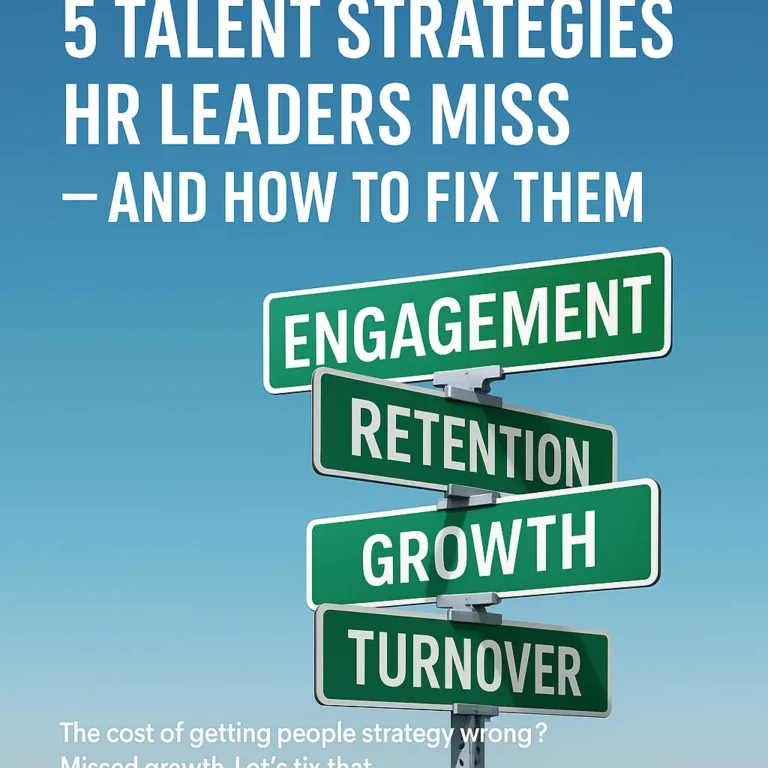Companies that have effective succession plans are able to quickly anticipate and fill their gaps, identify high potential employees, actively help them plan their careers, and ultimately align their people strategy with their business strategy.
When you do these things, you create the kind of leadership and management capacity that’s going to deliver sustainable business results.
We’ve talked about 3 ways to strengthen your bench and 7 signs that your succession planning isn’t working.
Now, it’s finally time to share what does work.
In no particular order, here are 10 different ideas to help you set up an effective succession plan that gets you and your business where you want to go.
1. Transfer knowledge and experience from the top. This is often the biggest struggle, because managers may feel that if they give up their knowledge, they’re easily replaceable. This is a common human thought. But I believe that a good manager is willing to share knowledge and experience, because if you hold on to your knowledge and make yourself indispensable, then you limit your ability to advance as well.
2. Look at building relationships across generations. There are 4 generations in the workplace, and each brings something different to the table in terms of life experiences and expectations. Any time we can build relationships across diverse groups of people, the skills that result from those partnerships make for much better leaders.
3. Strengthen leadership-peer relationships. If departmental silos still exist in your organization, you need to break them down. If the high potential employees coming up see these silos, they’ll be bred to behave the same way and that will keep your organization and your people from being as successful as you want them to be.
Leadership must demonstrate the kinds of behaviors they want to see up and coming employees demonstrate, and one of those key behaviors is the ability to work across departments to solve bigger business problems.
4. Don’t wait until the need for a leader is obvious. I’ve been in discussions with a prospective client who wants to step away from his business in 4-5 years. That’s a great timeline to plan for his succession and for the succession of his immediate reports. If he told me he wanted to retire at the end of this year, that ship has already sailed. But when you anticipate things down the road, you have time to create the plan you need.
5. Nurture your high potential employees. It’s not enough just to identify them. They probably know that they’re pretty good and if they’re not getting the love they want at your organization, they’ll most likely leave and get it elsewhere. You can’t be afraid to tap them on the shoulder and let them know you think they’re a high potential. Tell them you want to come up with a career plan for them and work them into the succession plan. You’re telling them, not committing or pre-anointing them for a promotion. You’re making a plan to nurture them, and that’s critical.
6. To the extent that you’re able, give high potentials cross-departmental learning and exposure. Whether it’s assignments in various departments or working on projects with folks from other departments, it’s critical that your high potentials have the opportunity to see how each department contributes to where the company is going. This both breaks down silos and creates well-rounded leaders for the future.
7. Offer executive coaching. This can be from within, from a professional coach, or from a peer in the industry. If you don’t have the expertise you need in-house to develop people, don’t let that be a stumbling block. Get your employees the coaching and skills they need, and don’t be afraid to reach outside for it if you need to.
8. Don’t have HR drive succession planning. Succession planning needs to be a function of the leadership team. Getting your leaders to focus on strategic planning early on in their careers has a snowball effect. When you start working with people early on in their career paths, succession planning becomes part of the company culture.
9. Provide a mentorship program for the newly promoted. Statistics show that a very high percentage of managers fail within their first 18 months. That’s simply because they’re not trained. Leaders tend to think that when employees are good at what they do, they can just promote them, and the employees will be good to go. It can be easy to forget that they will need continued support.
It may not need to come in the form of formal training. Mentorship from a peer or someone who had the role before is incredibly effective. Then, the new manager has someone they trust to go to when they struggle and hit roadblocks.
10. Assess the talent you have. Figure out what you currently have on the team. Then, look at the skills that are lacking and determine where you can get those skills. Can you grow them in-house, or recruit from the outside? This gives you a game plan for developing your people to increase effectiveness. Identify weaknesses early on in your high potentials and work that into their career and personal development plans.
If you can tackle a couple of these 10 things to get you moving down this path, you’ll be in decent shape. Look at your succession plan and ask how you can take it wider and deeper into your organization.
Ultimately, what you want to do is plan for your current and, even more importantly, future needs. When you work with all the items above, you’ll eventually get to a point where succession planning is integrated into every other HR initiative you have going. It becomes part of your strategy.
What is the state of succession planning in your organization? If you know your succession planning work isn’t integrated into your organization like it needs to be, contact me here and let’s chat about how I can help.


